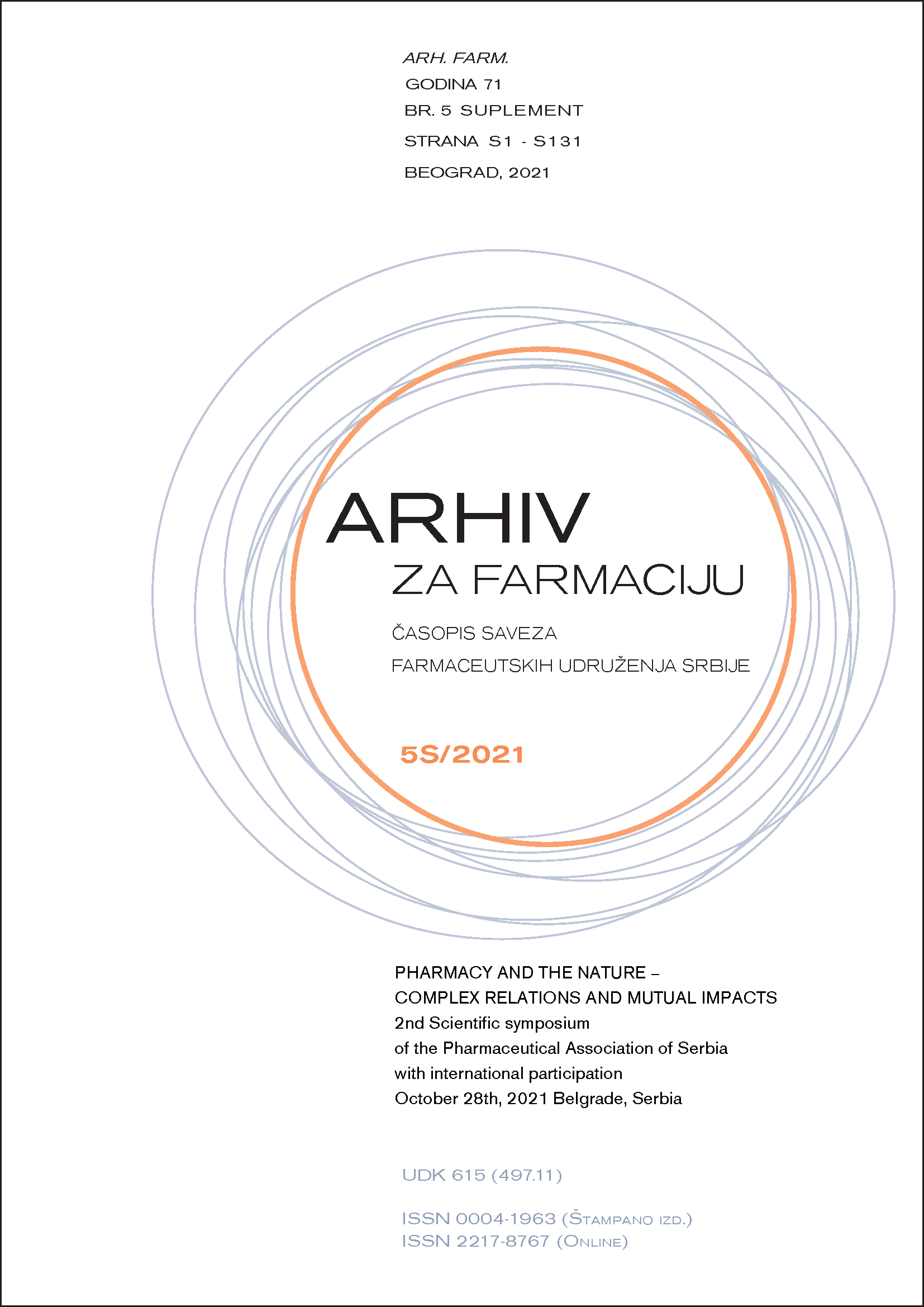CHOKEBERRY (ARONIA MELANOCARPA (MICHX.) ELLIOTT) WASTE – FROM WASTE TO FUNCTIONAL PHARMACEUTICAL PRODUCTS
Abstract
Due to the high content of various bioactive components, primarily polyphenolic compounds, but also vitamins and minerals, berries of Aronia melanocarpa (chokeberries) exhibit positive effects on human health. The sour taste and astringent properties of chokeberry fruit reduce its direct use as natural fresh fruits (1). The residue left behind during the processing of the chokeberry fruit (chokeberry waste), most often after squeezing the juice, is considered a waste product and as such is not used as nutrition or pharmaceutical product (2). Our research aimed to examine the chemical composition and antioxidative effects of the chokeberry waste extract, as well as to compare the obtained results with the effects and bioactive compounds content of whole chokeberry fruit extract and juice. Dried berries and the waste material were extracted with 50% ethanol under the optimal extraction conditions of the chokeberry polyphenols (3). After the extraction process, the chokeberry extract (CE), waste extract (CWE), and juice (CJ) were lyophilized to further preserve the active principles. Total phenolic, anthocyanins, proanthocyanidins, and flavonoid content were determined using appropriate spectrophotometric methods. The single anthocyanins and flavonoids quantification was carried out by the HPLC method. Antioxidative activity of the chokeberry fruit extracts and juice was determined using two in vitro methods, DPPH (1,1-diphenyl-2-picrylhydrazyl) and β-carotene-linoleic acid assay (BKL). The largest amount of phenolic compounds was quantified in CWE (702.77±95.30 mgGAE/g). Anthocyanins were the most abundant phenolic compounds in chokeberry preparations. CWE was the richest in anthocyanins (456.82±12.36 mg cyanidin-3-O-glucoside equivalents/g) and proanthocyanidins (140.18±8.07 mg catechin equivalent/g), while flavonoid compounds were found in the largest amount in CE (49.36±6.88 mg catechin/g). The highest content of cyanidin-3-O-galactoside (6.63±0.23 mg/g) as the most abundant anthocyanin, was also determined in CWE. CWE exhibited the most pronounced antioxidant activity in the DPPH- system (IC50=0.14±0.01 mg/ml). In contrast, another in vitro antioxidative method (BKL- test) showed that CWE exhibited the weakest antioxidant activity (IC50=0.68±0.11 mg/ml) compared to the other two chokeberry preparations. Complex intermolecular interactions among the pharmacologically active ingredients of chokeberry fruit, in addition to various human health promotion properties, indicated the required further studies on its chemical composition and biological effects. Some of the biological activities such as antispasmodic, antimicrobial and vasoralaxant were included in our further research. It has been shown that chokeberry waste could be a rich source of bioactive compounds and potentially usable raw material for the preparation of dietary supplements or nutraceuticals, pharmaceutical and cosmetic products.

